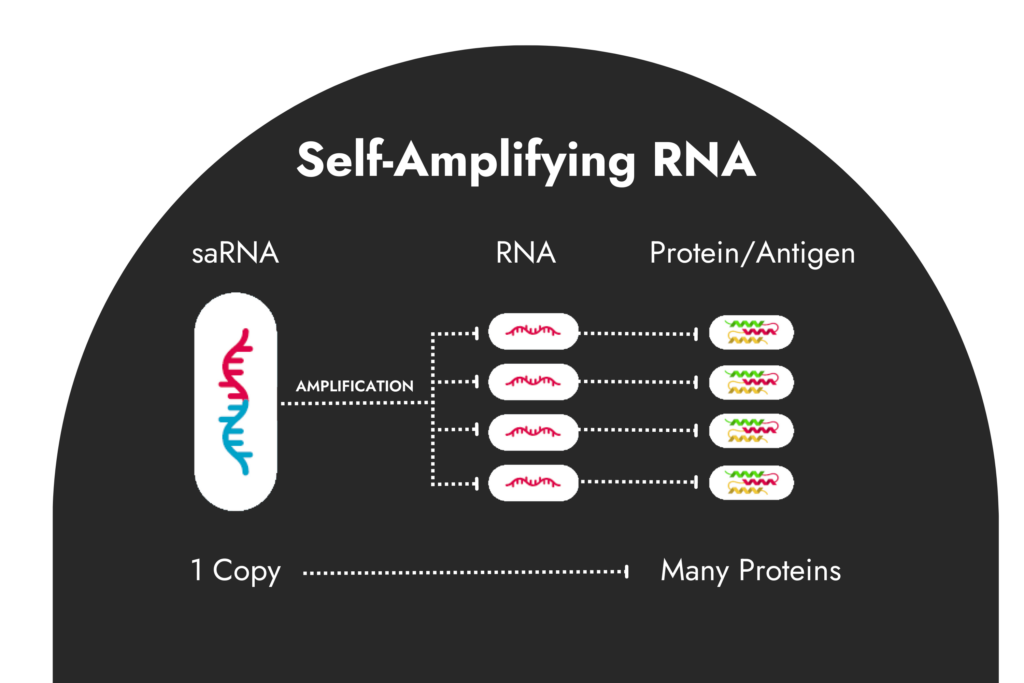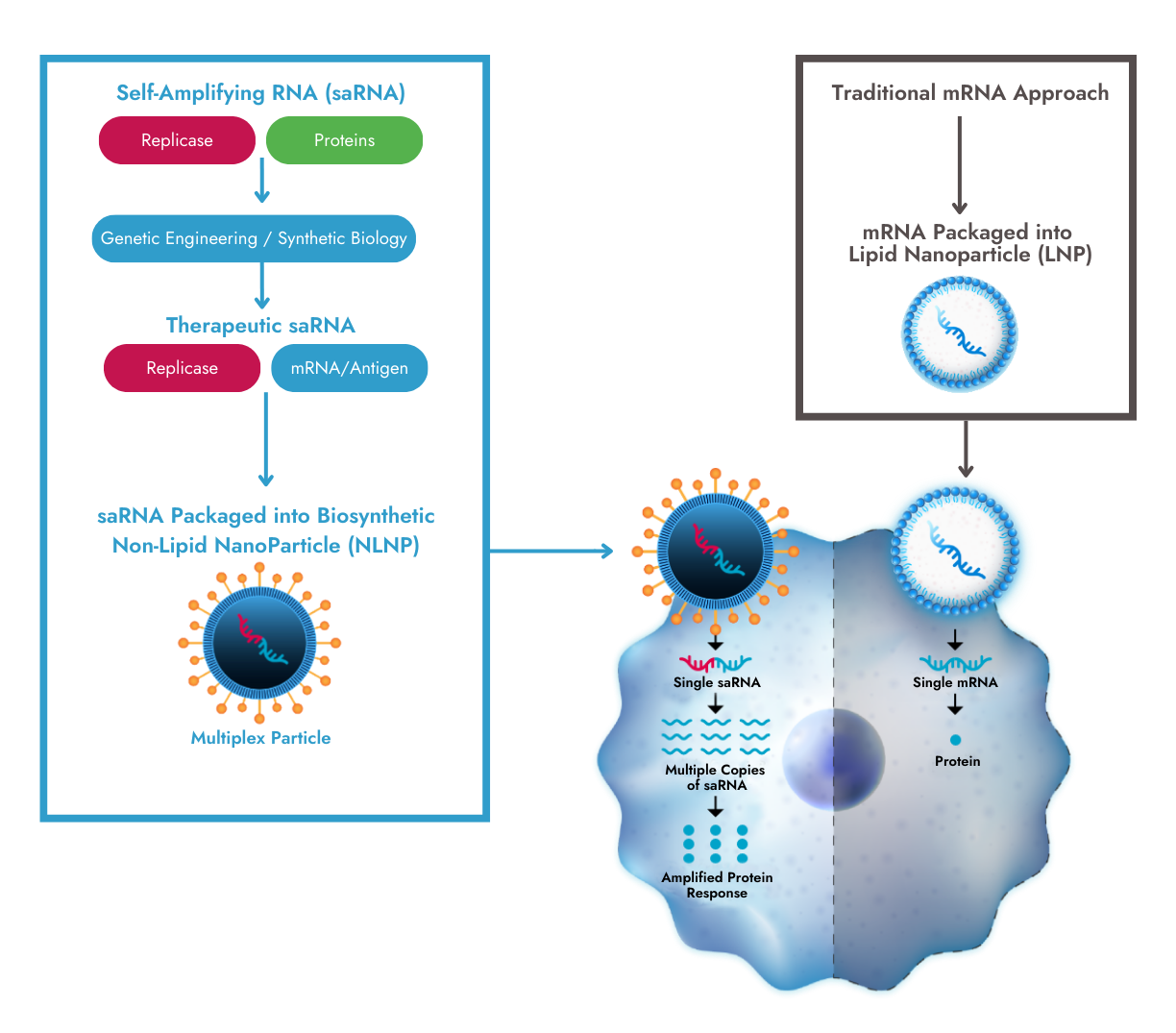Amplifying the Efficacy of RNA Therapeutics and Vaccines.

Self-amplifying RNA (saRNA) replicon is a type of RNA genome that is unique to certain families of viruses. This highly specialized system lets the virus make many copies of its RNA genome, and therefore encoded proteins, from just a single RNA template.

Self-Amplifying RNA
Advances in genomic sciences have helped re-engineer and re-direct this unique property of RNA for therapeutic purposes.
Using synthetic genomic and vector manipulation approaches, the portion of the RNA encoding viral structural components, essential for making an infectious particle, is replaced with a therapeutic gene of interest: for example, a therapeutic mRNA or antigen. Once the self-amplifying RNA is delivered to the tissues, many copies of the gene of interest are made by virtue of the amplification property of the RNA template. Importantly, the manipulated RNA replicon is not infectious and does not lyse cells ensuring durable protein expression.
Amplification essentially results in very high RNA copy numbers, thereby achieving effective gene expression and protein response with a much lower amount of saRNA compared to traditional mRNA.

